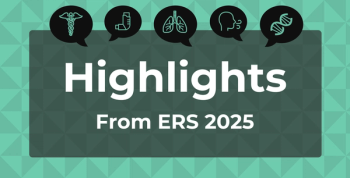
GLP-1 Receptor Agonists Could Reduce Risk of Glaucoma in Type 2 Diabetes
Key Takeaways
- GLP-1 receptor agonists may reduce glaucoma risk in T2D patients, though the reduction was nonsignificant.
- The review included five high-quality observational studies with over 2.5 million participants.
Patients with type 2 diabetes had a lower risk of glaucoma when they used glucagon-like peptide 1 (GLP-1) receptor agonists across multiple studies.
The link between glucagon-like peptide 1 (GLP-1) receptor agonists and the risk of glaucoma was recently illustrated in a review of several studies including patients with type 2 diabetes (T2D). The review, published in
Permanent blindness is most often caused by glaucoma, with
This review searched the MEDLINE, Cochrane Library, Google Scholar, and Scopus databases to collect data on studies that fit the eligibility parameters. Observational studies assessed the incidence of glaucoma in patients with T2D who were taking GLP-1s were included in the study. Studies that were not in English; were case reports, commentaries, review articles, or letters; were studies conducted on animals; or were not peer-reviewed were not included in the study. All studies also were evaluated for quality.
There were 5 studies that were included in the review, which included a total of 2,500,430 participants. The studies were conducted in the US, Taiwan, Denmark, and a multinational study that included the US. All studies were of high quality based on the Newcastle-Ottawa Scale.
There were 745,481 participants in the experimental group and 756,041 participants in the control group across all 5 studies. There was a nonsignificant reduction in the incidence of glaucoma (OR, 0.78; 95% CI, 0.60-1.02) in the participants who were taking GLP-1s in the study. There was also significant heterogeneity in the study (I2=88%). GLP-1s might be more beneficial compared with other anti-hyperglycemics when it comes to reducing the incidence of glaucoma (OR, 0.70; 95% CI, 0.52-0.92).
There were some limitations to this study. The entire review was made up of observational studies and did not include any randomized controlled trials. Heterogeneity was high in the included participants, which could be due to the study designs being different from each other. The studies also had various follow-up times, spanning from 3 years to 12 years, which could have affected the evaluation in the review. Protocols were not uniform across all studies, and comparisons were not the same across all studies. Direct comparison data was unavailable for the studies. Publishing bias was also possible.
The relationship between GLP-1s and glaucoma implies that the risk of glaucoma is decreased in those with T2D who are using GLP-1s. Figuring out which mechanisms of the GLP-1s are responsible for the potential reduction in risk could help in identifying pathways to reducing the risk of glaucoma overall.
“Continued research should focus on the long-term effects of [GLP-1s] on ocular health, particularly their neuroprotective mechanisms and their influence on intraocular pressure,” the authors concluded.
References
1. Asif M, Asif A, Rahman UA, et al. Incidence of glaucoma in type 2 diabetes patients treated with GLP-1 receptor agonists: a systematic review and meta-analysis. 2025;8:e70059. doi:10.1002/edm2.70059
2. Shifting prevalence of primary open-angle glaucoma: interactive U.S. map. American Academy of Ophthalmology. November 8, 2017. Accessed June 16, 2025.
Newsletter
Stay ahead of policy, cost, and value—subscribe to AJMC for expert insights at the intersection of clinical care and health economics.













































